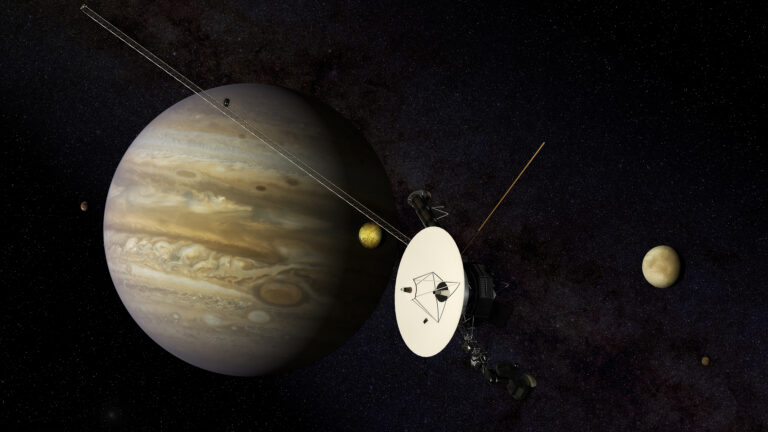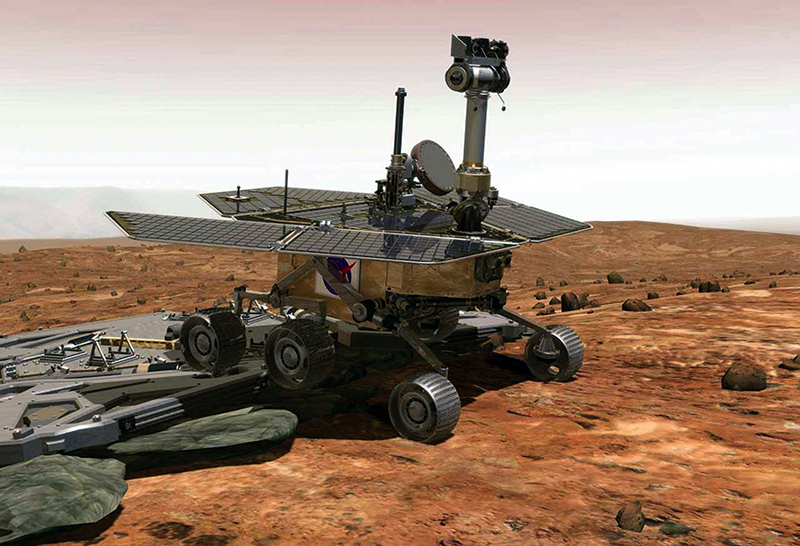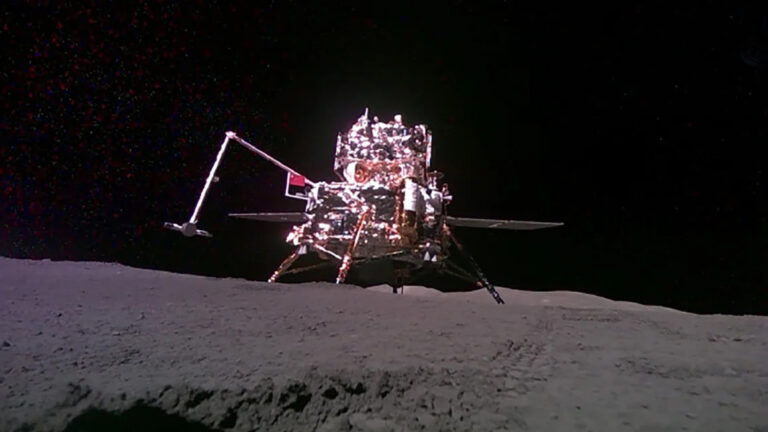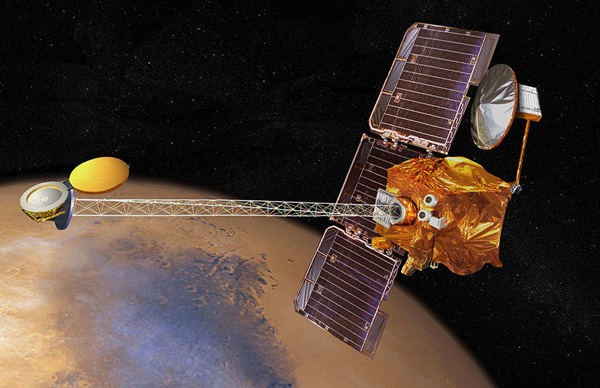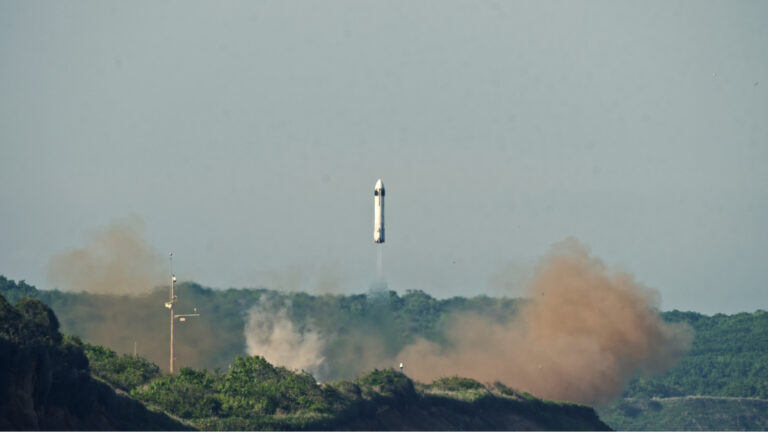Key Takeaways:
The James Webb Space Telescope wowed the world with its first science images release on July 12, which included data on the chemical composition of an exoplanet’s atmosphere. But that was just a glimpse at what JWST has to offer.
Now JWST has taken its first peer-reviewed spectrum of an extrasolar planet atmosphere. This time, scientists looked at WASP-39 b, a Saturn-like world orbiting extremely close to its parent star, with each orbit only taking 4.1 days. The data, which has been accepted for publication in Nature and presented in a preprint on arXiv.org, revealed the clearest evidence ever collected for carbon dioxide (CO2) in an exoplanet’s atmosphere.
Due to its prevalence in our own solar system, CO2 may not be the most groundbreaking of molecules to find. But it does have important implications for planetary formation theories and understanding the atmospheres of both giant and rocky exoplanets.
Why WASP-39 b?
These observations were taken as a part of JWST’s Early Science Release Program, which wraps up at the end of the observatory’s first five months of science observations. This meant that the scientists needed to select a target that would be visible during that time.
Not only that, since JWST would still be stretching its legs, researchers wanted a planet that would be big and easy for the telescope to scrutinize. And, of course, they wanted a world with a little mystery as well.
Size? Check.
- WASP-39 b is just about the same mass as Saturn and about 1.3 times Jupiter’s diameter.
Difficulty? Check.
- WASP-39 is a Sun-like star just 700 light-years distant. And this exoplanet orbits extremely close to its host star, about one-eighth the Sun-Mercury distance, completing one orbit roughly every 4 Earth-days.
Mystery? Check
- Previous observations from the Spitzer telescope indicated that CO2 could be present in the atmosphere of WASP-39 b, but the data could have just as easily been evidence of another molecule.
Unprecedented detail
The previous Spitzer observations may have hinted at the presence of a relatively heavy element, which mostly closely resembled CO2, but coauthor and University of Chicago professor of Astronomy and Astrophysics, Jacob Bean, wouldn’t have been surprised if those results were wrong.
“It was quite surprising that the Spitzer points held up as well as they did,” Bean told Astronomy. “I would have just been like, ‘Of course they’re not right.’” He adds they easily could have been statistically off from what JWST detected.
To Bean, JWST instead has validated some of those older Spitzer measurements. “The previous data are holding up really well, and now we’re just extending that with James Webb.”
In the spectrum of WASP-39 b, JWST was able to measure the subtle differences in individual colors across the 3- to 5.5-micron range, something no other observatory has done before. And JWST isn’t even done with this exoplanet yet. Three more observations are planned, which, when combined, will essentially give the full chemical inventory of WASP-39 b.
Scientists will then be able to use that information as a kind of fossil record, helping them piece together the formation history of the planet.
The great migration
Prior to the discovery of exoplanets, researchers believed that the gas giants in our solar system formed entirely in their respective orbits. But when observations showed that many giant exoplanets were winding up in wildly different orbits, such as extremely close to their host stars, that theory had to be modified. Now, most researchers think that Jupiter and Saturn migrated throughout the solar system during their formation, sweeping in closer to the Sun before backtracking closer to their original birth places.
This migration left fingerprints all over the planets’ atmospheres, as the two worlds picked up heavy-element-laden planetesimals — small, solid bodies present in the protoplanetary disks around young stars — that are only located closer to the Sun. Some of these bodies dissolved into the atmosphere of our gas giants, enriching them with heavy elements.
If WASP-39 b has a similar composition as Saturn, then that would suggest it also experienced such a migration before settling in its current orbit. “[Previously,] we haven’t had a lot of success because our instruments have not had the sensitivity, the wavelength coverage, the accuracy to really tell us this information,” says Bean. “And so, we’ve been kind of stumbling around in the dark about this.”
But JWST is finally ripping open the metaphorical blinds. While more data still needs to be analyzed, the new data seems to point to WASP-39 b being comparable to Saturn, according to Bean.
Migration isn’t the only explanation for how WASP-39 b’s atmosphere may have been seeded with a heavy element like CO2, however. It’s possible that, while it was still young, the world was assailed by comets and asteroids — an upbringing that is also comparable to Saturn.
More to come
Besides having implications for WASP-39 b’s origins, the JWST teases yet another mystery, too — another type of molecule whose presence can’t be as easily explained as the CO2.
Knowing the temperature, pressure, and elemental abundances of a planet’s atmosphere, scientists can usually compute a good estimate of the world’s expected chemistry. But the unidentified spectral feature is beyond what the model suggested, indicating that some other atmospheric phenomena is creating the mystery molecule.
“It’s a subtle spectral feature,” says Bean, which is why the team is taking its time to analyze all the data before they share their findings. But ultimately, “we wouldn’t have put it in the paper if we didn’t have a lot of confidence in it.”
JWST isn’t only focused on the mysteries of WASP-39 b, either. Or even just giant planets, for that matter.
Now that JWST has proven its capability, researchers will be using the observatory to peer at more Earth-like worlds. Although the level of detail attainable for a rocky planet will be significantly less than that for a giant planet, the confidence built by observing planets like WASP-39 b will influence how much trust is given to the telescope and its instruments when looking at rocky worlds.
“I think most people, given a choice [between WASP-39 b and Trappist-1 c] they’d probably pick Trappist-1 c,” says Bean, referencing a rocky, Venus-like world located some 40 light-years away. But “It’s all tied together for me,” he says. “We have to understand [WASP-39 b] at the same time we have to understand [Trappist-1 c], because the unifying factor is planets with atmospheres, our observational techniques, and how we go about interpreting that.”






